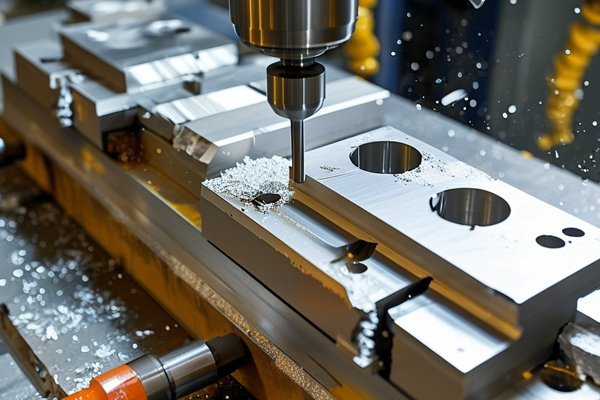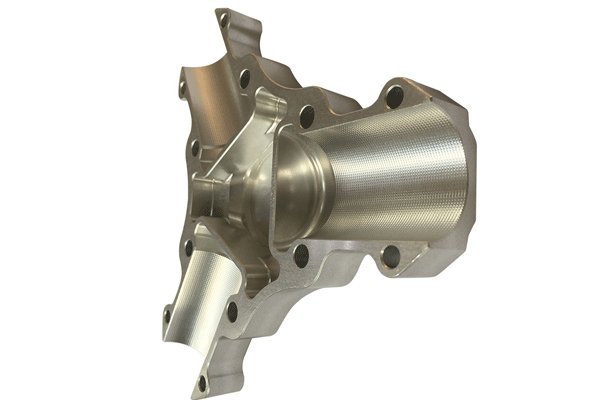Did you know that according to a recent report from the International Federation of Robotics, the global demand for CNC (Computer Numerical Control) machining is projected to grow at a compound annual growth rate (CAGR) of 8.5% between 2021 and 2028? The increasing need for precision, efficiency, and customization in manufacturing processes has made CNC machining an indispensable technology. As industries evolve, the demand for high-quality, intricate components has surged, prompting businesses to seek machining services that align with their specific requirements.
In this comprehensive guide, we will explore how CNC machining can be tailored to meet incoming customer specifications and drawings, ensuring that manufacturers achieve the level of precision they require. We will dissect each phase of the CNC machining process, emphasize the significance of adhering to customer designs, and provide actionable insights to ascertain that all parties—manufacturers and clients alike—achieve their goals in precise machining.
—
—
CNC machining involves the use of computer-controlled machines to remove material from a workpiece to create a desired shape and size. This automation is critical in achieving high levels of precision across various industries, including aerospace, automotive, medical, and electronics. Unlike traditional machining methods, which are often manual and prone to human error, CNC machines can replicate designs with incredible accuracy.
CNC technology encompasses several types of machining processes including milling, turning, grinding, and electrical discharge machining (EDM). Each type has distinct advantages and specific applications, making it possible to create anything from simple brackets to intricate aerospace components.
At the core of successful CNC machining lies clear and precise customer-provided drawings and specifications. These documents serve as the blueprint for producing components that meet exacting standards. Here are some key reasons why these documents are critical:
A successful CNC machining project follows a structured process that ensures precision and efficiency. Here’s a breakdown of the steps involved:
3.1 Design Phase
The process begins with reviewing customer-provided drawings. Engineers and designers analyze these documents to ensure they are clear, detailed, and achievable with the CNC process selected.
3.2 Programming
Once the design is finalized, CNC programmers create a Computer-Aided Manufacturing (CAM) file. This file translates the drawing into machine language, which directs the CNC machine on how to move, cut, and shape the material.
3.3 Material Selection
Selecting the appropriate material is crucial for achieving the desired properties. The material must meet specifications regarding strength, machinability, and durability.
3.4 Machining
The CNC machine executes the machining process based on the programmed instructions. Various operations like cutting, drilling, and tapping are conducted to achieve the final shape.
3.5 Inspection and Quality Control
After machining, the components undergo inspection to verify that they conform to specifications. This step often involves measurement tools like calipers and coordinate measuring machines (CMMs).
3.6 Finishing
Finishing processes such as polishing, anodizing, or plating may be performed to enhance the surface quality and prolong the lifespan of the parts.
3.7 Delivery
Finally, the finished product is packaged and delivered to the customer, often with documentation detailing the machining process and quality checks performed.
For CNC machining to effectively meet customer specifications, engineers must consider several factors during the design phase:

4.1 Tolerances
Understanding the tolerances required for the application is crucial. Tighter tolerances demand more advanced machining techniques and higher costs.
4.2 Features
Complex features such as holes, grooves, or slots need careful planning to ensure they can be manufactured without compromising the component’s integrity.
4.3 Material Behavior
Certain materials behave differently during machining. Knowledge of these behaviors helps in selecting the right processes and tools.
4.4 Manufacturing Processes
Choosing the right CNC machining process—be it milling, turning, or others—depends on the component’s design and the desired finish.
CNC programming plays a pivotal role in the CNC machining process. A well-written program ensures every detail of the customer’s specifications is adhered to. Here are some techniques:
5.1 G-Code
This standard programming language instructs CNC machines on movements and operations. Knowledge of G-Code allows for custom modifications that align closely with the customer’s needs.
5.2 Simulation Software
Using simulation software helps programmers foresee the machining process and catch potential errors before actual production. This step saves time and resources.
5.3 Post-Processor Applications
Post-processing applications convert CAM software output into specific machine language that matches the CNC equipment being utilized.
Quality assurance (QA) is integral to maintaining the precision of CNC machining. Here are key QA strategies:
Working with customer-provided specifications can present various challenges. Here are some common problems and how to address them:
7.1 Miscommunication
Misunderstandings can arise if customer specifications are unclear. Open lines of communication and frequent updates can mitigate this issue.
7.2 Material Limitations
Not all materials are suitable for all machining processes. Thorough knowledge of material properties can help prevent wasted resources.
7.3 Tool Wear and Breakage
Tools can wear down or break, affecting the quality of the component. Regular maintenance and scheduled tool replacements can reduce this risk.
7.4 Cost Management
Custom projects can often lead to unexpected costs. Detailed project planning that includes contingency funds can help manage financial risks.
Technological advancements continue to reshape CNC machining. From increased automation to the integration of artificial intelligence (AI), the future holds exciting possibilities. Customization in CNC machining is becoming more efficient through technologies like 3D printing, which allows for rapid prototyping alongside CNC production.
In summary, the ability of CNC machining to provide precision services according to customer-provided drawings and specifications is one of the defining features of modern manufacturing. From understanding and interpreting drawings, navigating the programming intricacies, to executing quality assurance measures, each step must be handled with meticulous attention to ensure product excellence.
The importance of accurate and clear customer specifications cannot be overstated. As the demand for precision engineering continues to rise, businesses that embrace CNC machining’s capabilities will stand to gain a competitive edge in their respective industries. By fostering collaboration and communication between manufacturers and clients, both parties can achieve high-quality results that meet specific requirements.
As you reflect on this topic, consider how implementing the strategies and insights covered in this blog can enhance your interactions with CNC machining services—whether you’re a manufacturer, designer, or end-user. Understanding the nuances of meticulous preparation for CNC machining can ultimately lead to better results, minimized errors, and successful projects that not only meet but exceed expectations.






